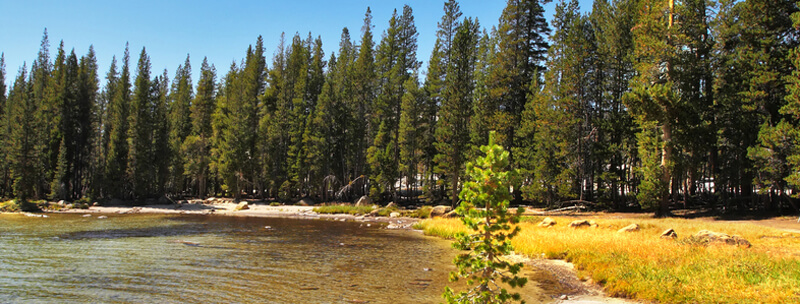U.S. Supreme Court Upholds CERCLA Section 107(a) Cost Recovery Actions by Potentially Responsible Parties in U.S. v. Atlantic Research Corp.
In our April 2007 edition of Environmental Update, we introduced you to U.S. v. Atlantic Research Corp., 459 F.3d 827 (8th Cir. 2006), in Eighth Circuit Interprets Aviall; Now To Be Decided By U.S. Supreme Court. The Supreme Court decided the case on June 11, 2007 in favor of respondent Atlantic Research, upholding cost recovery actions by potentially responsible parties ("PRPs"). The decision changes the law in New Jersey because it invalidates existing Third Circuit precedent in E.I. DuPont DeNemours and Co. v. United States, 460 F.3d 575 (3d Cir. 2006) (holding that Section 107 does not provide PRPs with a cause of action for contribution).
The issue decided by the Court is whether owners of contaminated sites can recover clean-up costs from other PRPs under Section 107 of the Comprehensive Emergency Response, Compensation and Liability Act ("CERCLA" or the "Act") prior to or without ever being subject to a federal or state enforcement action. This case originally was brought under both Sections 107(a) and 113(f) of CERCLA; Atlantic Research amended its complaint after the Supreme Court’s 2004 decision in Cooper Industries v. Aviall Services, 125 S.Ct. 577 (2004) to seek recovery under Section 107(a) and federal common law.1 Relying upon pre-Aviall precedent in the Eighth Circuit stating that Section 113(f) provided the sole remedy, the complaint was dismissed by the district court. On appeal, the Eighth Circuit reversed the district court and revised its prior precedent; it held that Section 107(a) did provide a pre-enforcement right of contribution. The United States Supreme Court granted certiorari, presumably to resolve the disagreement among the circuits generated by the Aviall decision as to the existence of an implied right of contribution under Section 107(a).
The Petitioner United States began by presenting four reasons why he believed Section 113(f) of CERCLA does not, and should not be interpreted to, include a mechanism for contribution. Such an interpretation would: (1) violate "fundamental canons of statutory construction"; (2) render Section 113 (f) superfluous; (3) not respect the textual limitations enforced by the Supreme Court in Aviall; and (4) frustrate Congress’s clear intent to encourage settlements with the government in order to achieve supervised effective cleanups. The Justices’ inquiries, however, resulted in a focus on only two of these points – the meaning of the text of the statute (its construction) and the impact of either side’s interpretation on settlements.
Petitioner’s argument was that Section 107(a)(4)(B), which states a PRP is liable for "any other necessary costs of response incurred by any other person consistent with the national contingency plan," does not authorize PRPs to seek contribution from other PRPs. Going on, the argument was that the term "any other person" excluded PRPs, as PRPs are the subject of the sentence, thus advocating the position that only innocent parties have an implied cause of action for contribution under Section 107(a). The Justices were not easily convinced of this reading and questioned Petitioner extensively on this point.
Justice Ginsburg began this line of questioning with a very pointed inquiry. She asked Petitioner about the Court’s statement in Key Tronic Corp. v. United States, 511 U.S. 809 (1994) that "Section 107 unquestionably provides a cause of action for private parties to seek recovery of cleanup costs." Petitioner responded by arguing that Aviall held this part of Key Tronic to be mere dicta. Justice Souter followed by questioning who, other than PRPs, would utilize the action provided for by Section 107. The United States’ responses were not well-received; Souter did not believe that government entities fit into the realm of private parties and did not seem convinced that parties other than those accounted for in Section 107(a)(1)-(4) would utilize the cause of action provided by Section 107. Justice Souter even went so far as to say that Petitioner’s position "at the least would involve a very odd language usage." Even Chief Justice Roberts pointed out that the liability was for costs incurred by any other person, "other refer[ring] to other than the United States or a State or an Indian Tribe." Justice Breyer went on to say that even without a lawsuit, PRPs can still be liable to one another and a suit is not required.
Petitioner also argued that allowing contribution actions among PRPs under Section 107 would discourage settlement by disrupting the settlement bar that exists under Section 113 and protects settling parties from additional liability to other PRPs. The Justices did not seem convinced of this position, especially with respect to instances where the government itself was a responsible party that refused to settle.
Respondent, Atlantic Research, began its oral argument by attacking Petitioner’s presumptions as to the settlement bar and then moved on to discuss the text of CERCLA. The theme of settlement seemed to dominate Respondent’s oral argument, as the Justices’ had many questions on this subject. Respondent tried to argue that contribution actions require the district court to act as a court of equity, empowered to accord settlement protection to a settling party as a matter of equity in any Section 107(a)(4)(B) case. Justice Breyer, through use of an extreme hypothetical involving a settlement with the government by one PRP for a miniscule amount and another PRP forced to conduct an expensive cleanup, pointed out that under Respondent’s interpretation, in a Section 107 action one would argue equities, but under Section 113, once a settlement has been made with the Federal Government one’s liability as to all others has been resolved. Justice Breyer also highlighted the fact that maybe Congress had not intended parties to be able to use Section 107 to reevaluate prior settlements for fairness; by providing a sense of finality, allowing contribution under Section 113 encourages settlement.
Respondent also opposed Petitioner’s interpretation of Section 107(a)(4)(B) of the Act, arguing that it was a strained interpretation of the statute. Respondent advocated for recognition that Section 107(a) does provide an unlimited right of contribution to any party that has incurred necessary response costs in accordance with the national contingency plan, a position taken by several lower courts. Respondent further conceded that Section 113 was passed to encourage settlement in cases where there had been an action brought against a PRP and noted two benefits to PRPs to settlement: (1) avoiding having to satisfy the burden of proof that its costs were consistent with the national contingency plan, and (2) immunity from contribution suits from others.
There was also oral argument on behalf of various amici curiae supporting the Respondent. Their arguments can be boiled down to two main points: (1) that "any other person" was not limited to "innocent persons," and (2) settlement was best encouraged under the Respondents’ point of view. The amici curiae explained that settlement with the government would not be abandoned in order to pursue a 107 claim; settlement with the government is still valuable even under Respondent’s interpretation. However, the Petitioner’s position would eliminate incentives to private clean-ups as the ability to recover these costs would be limited even as to innocent parties.
The Court ultimately sided with Respondent and the amici curiae, holding that Section 107(a) permits recovery actions by PRPs. The Justices unanimously accepted the Respondent’s arguments finding that the plain language of Section 107 of CERCLA, read in context, authorized cost recovery actions by any person other than the United States government, a state or an Indian Tribe – essentially any private party, including PRPs. Affirming the Eighth Circuit’s decision, the Supreme Court settled a significant question of law that has existed since Aviall.
*****************************************************
1 The Aviall decision provided that a private party could only obtain contribution from other PRPs under Section 113 of CERCLA, provided that the party had already settled its liability to the government under Sections 106 or 107(a) of CERCLA. The case did not address the possibility of pursuing contribution under Section 107 of the Act.
Controversial Stream Encroachment Restrictions Become Effective
The New Jersey Department of Environmental Protection’s ("NJDEP") substantial amendments to the stream encroachment regulations became effective on November 5 2007. The amendments either in fact, or effectively prohibit development of vast swaths of currently developable land in New Jersey. Following are the notable changes:
The current stream encroachment buffer zone is expanded from either 25 or 50 feet by creating a new "Riparian Zone" of 50, 150 or 300 feet in width. This change alone subjects many currently unregulated projects to the regulations.
Moreover, there are extreme limitations on the disturbance of vegetation permitted with the new Riparian Zone.
Furthermore, the amendments require construction of roadway surfaces and driveways at least one foot above the flood hazard area elevation unless the applicant proves it is infeasible. A 25 foot setback from any top of bank or edge of water is imposed for all new construction, or reconstruction of existing buildings, regardless of whether the site is located in a flood hazard area.
Those disturbance limits are coupled with requirements for mitigation (if a project exceeds those extreme limits) that will be difficult to meet for most affected projects. In part, the proposed mitigation regulations would require two-for-one creation of vegetated acreage along the same riparian water way as the project. It is frankly hard to imagine that there is much available, open land in New Jersey to accommodate such a regulatory requirement. Thus, if the mitigation requirements are enforced, then most river-front projects on lots of any appreciable size will be unable to meet the regulatory requirements.
Additionally, the NJDEP expanded the classification of Class 1 waters (subject to the 300 foot buffer) to include an additional 900 miles of New Jersey waterways.
Finally, the amendments abandoned the current 20 percent Net Fill Rule for projects in the flood fringe. Rather, the NJDEP imposes a uniform 0 percent New Fill Rule. This change means that any development entails the creation of onsite flood storage areas, further reducing the available acreage for development and increasing the cost of that limited development.
Anyone seeking to perform construction in or near a flood hazard area in New Jersey should plan for the new requirements.
NJDEP Offers Grace Period for Past Due Biennial Certifications of Deed Notices and CEAs
NJDEP offered a temporary grace period to many persons responsible to file Biennial Certifications of engineering and/or institutional controls ("E/I") used to remediate contaminated sites who had not previously filed the certification. Subchapter 8 of the Technical Requirements for Site Remediation, N.J.A.C. 7:26E, requires a person responsible to conduct a remediation using E/I, and subsequent property owners and operators to evaluate and report on the protectiveness of the controls two years after the controls have been established and biennially thereafter. For example, a Biennial Certification is required for an approved Deed Notice for remediation of contaminated soils or a Classification Exception Area (CEA) for ground water.
Failure to conduct the evaluation and submit the certification on a biennial basis are non-minor violations subject to a penalty of $8,000 per day pursuant to Subchapter 10 of NJDEP’s oversight rules, N.J.A.C. 7:26C, and may give rise to revocation of a No Further Action letter and Covenant Not to Sue. NJDEP issued notice of a grace period prior to the assessment of penalties to persons who the agency believes were previously required to file a Biennial Certification but have failed to do so. The grace period ended September 18, 2007.
Environmental Class Actions in Federal Court Encouraged by New Law
A recent decision by the New Jersey federal District Court protects the right of defendants in an environmental class action to defend the action in federal court instead of state court. This right is established under the Class Action Fairness Act of 2005 ("CAFA"), 28 U.S.C. §§ 1332(d), 1453 and 1711–55, which expands federal jurisdiction over state law class action claims by allowing the removal to federal court of many class actions on diversity grounds when total claimed damages exceed five million dollars. CAFA was enacted, in part, to reduce forum shopping, as state courts are often viewed by plaintiffs to be more favorable forums in which to prosecute claims against out-of-state defendants.
Shappell v. PPL Corp., 2007 WL 893910 (D.N.J. Mar. 21, 2007), originally was filed in the New Jersey State Superior Court by a class of plaintiffs seeking redress for damages allegedly caused by defendants’ release of fly ash, a pollutant that results from the combustion of coal at power plants. Defendants removed the action to federal court under CAFA. Subsequently, the plaintiffs filed a motion for voluntary dismissal of their class action claims and for remand of the remaining claims back to state Superior Court. Plaintiffs argued that they preferred to proceed as individuals in state court, rather than as a class in federal court. Defendants, however, argued that dismissal and remand to state court could serve as a means to avoid federal jurisdiction, thereby prejudicing defendants’ rights under CAFA. After remand, plaintiffs could re-group into smaller classes—each class seeking damages below CAFA’s five million dollar threshold—and file one or more class action complaints in state court that were incapable of removal to federal court.
Federal courts generally grant plaintiffs leave to voluntarily dismiss their own complaints, absent prejudice to defendants. Consequently, the Court granted the Shappell plaintiffs’ motion. However, mindful of the defendants’ argument that plaintiffs might attempt to avoid federal jurisdiction, the dismissal was permitted on the condition that none of the plaintiffs may file or enter another class action lawsuit based upon the facts alleged in the complaint to be dismissed. As a result, the Court prevented prejudice to both the plaintiffs and the defendants, while at the same time preserving the legislative intent of CAFA.
"Loss of Use" in Natural Resource Damage Cases Upheld by Appellate Division
In recent months, New Jersey courts have issued rulings cutting to the very essence of "natural resource damages" (or "NRD") as used by the NJDEP. In this edition of Environmental Update, we look at the Appellate Division of the Superior Court of New Jersey in New Jersey Department of Environmental Protection v. ExxonMobil Corporation, 2007 WL 1610091 (App. Div. June 6, 2007).
The Appellate Division held that a discharger can be held liable under the New Jersey Spill Compensation and Control Act, N.J.S.A. 58:10-23.11 to -23.24 (the "Spill Act"), for damages for the loss of use of natural resources. This ruling overturned a Superior Court decision that the Spill Act did not authorize damages for the loss of use of natural resources. See New Jersey Department of Environmental Protection v. ExxonMobil Corporation, Docket No. UNN-L-3026-04 (May 26, 2006).1
The Spill Act provides that dischargers of hazardous substances shall be strictly liable for cleanup and removal costs for such discharges. N.J.S.A. 58:10-23.11g(c)(1). The regulations implementing the Spill Act provide that the term "remedial action costs" includes "natural resource damages." N.J.A.C. 7:26E-1.8. "Natural resource damages" are the value of the restoration that is necessary to restore injured natural resources, such as contaminated air or water, and to compensate the citizens of the State for the injury to natural resources.
The "loss of use" component of "natural resource damages" is a dollar value of damages to the state’s natural resources after the remedial cleanup process is complete. As the Appellate Division put it, "loss of use" is a means of measuring the reduction of services provided by a polluted natural resource and establishing a value for its replacement.” 2007 WL 1610091 at *6. For example, the "loss of use" component of natural resource damages recompenses the State for the inability to use groundwater for drinking due to groundwater contamination.
In this case, ExxonMobil operated petroleum refineries and petrochemical plants at Bayonne and Bayway refineries, and discharged hazardous substances into natural resources of the state. Id. at *3-4. In 1991, ExxonMobil entered into two Administrative Consent Orders with NJDEP, in which it agreed to remediate the Bayway and Bayonne sites, but which did not preclude the State from seeking further relief for natural resource damages. Id. at *4-5. NJDEP and ExxonMobil attempted to resolve their differences with regards to restoring the refinery sites, but were not able to come to an agreement. Id. at *11.
Consequently, in August 2004, the NJDEP filed two complaints against ExxonMobil for, among other things, natural resource damages, including loss of use. ExxonMobil conceded it is liable for physical restoration of damaged or destroyed natural resources, and that loss of use is available under common law and other statutes. However, ExxonMobil moved for summary judgment on its position that the Spill Act does not authorize damages for loss of use of groundwater. The Superior Court granted ExxonMobil’s motion for summary judgment with respect to natural resource damages for lost use of groundwater, relying on the lack of any specific language in the Spill Act suggesting that damages for lost use of natural resources are recoverable. Slip op. at 7-8.
The Appellate Division reversed the Superior Court decision. After considering the history and legislative intent of the Spill Act, the Court ruled that NJDEP’s construction of the Spill Act was supported by the text of the statute. 2007 WL 1610091 at *18. It found that the terms "cleanup and removal costs" are broadly worded in the Spill Act, and that giving the statute an expansive reading was necessary to effectuate NJDEP’s obligations to address environmental problems of the State. Id., at *20-21. Since the Spill Act vests NJDEP with broad power to cleanup and remediate environmental contamination, the statute implies the authority to seek loss of use damages. Id., at *25.
The effect of the decision is to return loss of use of natural resources to NJDEP’s natural resource damages calculus. Given that NJDEP’s efforts to recover natural resource damages at thousands of contaminated sites in New Jersey are based, at least in part, on recovery of lost use of natural resources, this decision probably will have the effect of continuing the Department’s practice of seeking large natural resource damage awards.
***************
1 In the next edition of the Environmental Update we return to the subject of natural resource damage decisions, and analyze the Superior Court opinion in NJDEP v. ExxonMobil Corporation, Docket No. MER-L-2933-02 (August 24, 2007), which opinion struck down the groundwater NRD formula currently used by the NJDEP. It is important to understand, however, that the August decision did not address whether the NJDEP can seek NRD, and that the June Appellate Division decision remains the law of New Jersey.
New Federal Wetlands Guidance Issued by EPA and the U.S. Army Corps of Engineers
In the September 2006 edition of the Environmental Update, we indicated that the U.S. Environmental Protection Agency ("EPA") and the U.S. Army Corps of Engineers (the "Corps") were developing a guidance document to clarify jurisdictional determinations in light of the United States’ Supreme Court decision in Rapanos v. United States, No. 04-1034, 547 U.S. , 126 S.Ct. 2208 (June 19, 2006) ("Rapanos"). See "U.S. Supreme Court Decides Wetlands Case but Offers Little Direction," Environmental Update, September 2006. That guidance was finally issued by the EPA and the Corps on June 5, 2007, entitled Clean Water Act Jurisdiction Following the U.S. Supreme Court’s Decision in Rapanos v. United States & Carabell v. United States (the "Guidance"). The Guidance is meant to assist Corps personnel in anticipating jurisdiction over various water bodies. The Guidance sets forth three jurisdictional categories of waters:
(1) waters over which the Corps will assert jurisdiction, which include (a) traditional navigable waters, (b) wetlands adjacent to traditional navigable waters, (c) relatively-permanent non-navigable tributaries of navigable waters, and (d) wetlands directly abutting relatively-permanent non-navigable tributaries; (2) waters that require a fact-specific finding of jurisdiction based on the significant nexus test advocated by Justice Kennedy in Rapanos, which include (a) non-permanent non-navigable tributaries, (b) wetlands adjacent to non-permanent non-navigable tributaries, and (c) wetlands adjacent to relatively-permanent non-navigable tributaries; and (3) waters over which there is no jurisdiction, which include swales, erosional features, and ditches not carrying a relatively permanent flow of water.
The Rapanos case left some confusion as to the exact extent of the federal government’s jurisdiction over wetlands, especially since the Rapanos decision offered no majority opinion. This Guidance, which has been long-awaited, offers some clarity as to jurisdiction, although the second category (waters that require a fact-specific finding of jurisdiction based on the significant nexus test) still leaves questions about jurisdiction with regard to certain wetlands.
With respect to wetlands regulation in New Jersey, only certain otherwise-covered waters and associated wetlands are subject to the Corps’ jurisdiction, due to the State’s assumption of a portion of the federal wetlands program. These waters include the Delaware River within the State of New Jersey, those waters within the area governed by the New Jersey Meadowlands Commission, and Greenwood Lake. Filling of wetlands in these waters requires federal and State wetlands permits. The Guidance is applicable in determining the Corps’ jurisdiction over these waters.
The Corps has been collecting comments on the Guidance, and it is expected that the Guidance will be either revised or reissued in Spring 2008. There also is some expectation that the Corps will eventually engage in rulemaking based upon this Guidance. We do not, however, anticipate any such developments in the near future.
Nationwide Wetlands Permits Revised and Reissued by U.S. Army Corps of Engineers
In New Jersey, the State has jurisdiction over freshwater wetlands, buffer areas and transition areas pursuant to the New Jersey Freshwater Wetlands Protection Act. Therefore, NJDEP has primary oversight of freshwater wetland regulations in the state, and reviews and administers applications for permits to build or develop within these lands.
However, in much of the country, including New York State, the federal government exercises jurisdiction over freshwater wetlands. Section 404 of the Clean Water Act allows the federal government to issue permits to authorize the discharge of dredged or fill materials into navigable waters at specified sites. And pursuant to this authority, the U.S. Army Corps of Engineers issues three kinds of permits: general permits, individual permits and "nationwide" permits.
The Clean Water Act allows nationwide permits "for any category of activity involving discharges of dredged or fill material" if it is determined that a category of activity is similar in nature, will cause only minimal adverse environmental effects when performed separately, and will have only minimal cumulative adverse effects on the environment. 33 U.S.C. § 1344(e)(1). Nationwide permits are valid only if the proposed activities comply with all terms and conditions of the permit, and, if the terms and conditions cannot be met, a general or individual permit is required. Nationwide permits typically cover a broad category of activities, such as bank stabilization (NWA 13), maintenance (NWP 3), and mining activities (NWP 44).
New nationwide permits took effect this past spring following the required rulemaking process. The Corps re-issued all the existing nationwide permits and issued six new ones. The new permits are:
NWP 45 (Repair of Uplands Damaged by Discrete Events)
NWP 46 (Discharges in Ditches)
NWP 47 (Pipeline Safety Program Designated Time-Sensitive Inspections and Repairs)
NWP 48 (Existing Commercial Shellfish Aquaculture Activities)
NWP 49 (Coal Remining Activities)
NWP 50 (Underground Coal Mining Activities)
The most fundamental provision of each nationwide permit is the limit on how much fill can be allowed in a wetland under a particular permit. For example, residential developments may proceed under NWP 29 (Residential Developments), but may not cause the loss of greater than 1/2-acre of non-tidal wetlands, among other requirements. The new nationwide permits retain the acreage limits from the current nationwide permits.
The U.S. Army Corps’s public notice can be found on their website at: www.saw.usace.army.mil/wetlands/Notices/NWP07/Final_PN_15mar07r3.pdf.
EPA Regulation of Greenhouse Gasses Approved by United States Supreme Court
The Supreme Court held in Massachusetts v. EPA, 127 S.Ct. 1438 (2007) that Title II of the federal Clean Air Act, 42 U.S.C. § 7401 et seq. ("CAA" or the "Act"), provides EPA with the authority to regulate greenhouse gasses from automobiles. This decision requires EPA to reconsider its policy against regulating greenhouse gasses, and, if it still intends to not regulate greenhouse gasses, the agency must provide a reasonable explanation.
The Massachusetts case was brought by Massachusetts and eleven other states after EPA declined a 1999 petition to require the agency to regulate greenhouse gasses, such as carbon dioxide, from motor vehicles. EPA stated at the time of the 2003 denial of the petition that it lacked authority under the CAA to regulate these gasses as air pollutants, and that even if it had the authority to regulate the gasses, it still would postpone rulemaking until the science of climate change is better understood. This policy decision was upheld by the D.C. Circuit Court of Appeals.
The case focused on the language of Section 202(a)(1) of the Act, which provides that the EPA shall regulate "any air pollutant" that could endanger the public health or welfare. A broad reading of this language seems to include greenhouse gasses since, as it is commonly understood, greenhouse gasses prompt climate change which, in turn, may have a direct effect on the public welfare. For example, Massachusetts argued that greenhouse gas emissions, if left unregulated, would jeopardize that state’s coastline in the future. Given the fact that these harms are projected and arguably speculative, the Court spent some time during oral argument trying to establish the states’ standing to bring this case. Surprisingly, the Court found that the states maintained the proper standing to bring the suit. The Court also agreed that the EPA had statutory authority under the CAA to regulate greenhouse gasses from automobiles.
This decision illustrates the increasing attention that climate change issues are receiving. Coupled with the various legislative proposals in Congress to limit or cap greenhouse gas emissions from other sources, this case marks a turning point in how the United States deals with this global issue. Please see our next edition of the Environmental Update for a more detailed analysis of current climate change initiatives.
Legislative Update
Recent Environmental Laws
P.L. 2007, c.112 (A3301) ("The Global Warming Response Act") Calls for reduction in greenhouse gas emissions to 1990 levels by 2020, followed by a further reduction to 80 percent of 2006 levels by 2050.
P.L. 2007, c.113 (A2804) Prohibits the sale, use and burning of creosote or creosote-treated products.
P.L. 2007, c.118 (A792) Increases civil penalties for safety violations with respect to certain natural gas or hazardous liquid facilities.
P.L. 2007, c.131 (S1712) Eliminates the ten-year statute of limitations for environmental crimes.
P.L. 2007, c.142 (S2581) Authorizes the Delaware and Raritan Canal Commission to charge project application review fees and issue general permits for certain projects.
***********************
Recently Introduced Environmental Bills
A4111 Establishes the California fine particle air standard as the State standard. Status: Pending in the Assembly Environmental and Solid Waste Committee.
A4115 Requires any engineering firm conducting a remediation project using moneys from Hazardous Discharge Site Remediation Fund to be properly qualified by training and experience. Status: Pending in the Assembly Environmental and Solid Waste Committee.
A4152 Requires NJDEP to submit annual financial report on status of certain fund balances. Status: Pending in the Assembly Environmental and Solid Waste Committee.
S2575 Increases host community benefit for municipalities where solid waste transfer stations are located from fifty cents to one dollar per ton of solid waste processed at such facilities. Status: Pending in the Senate Environmental Committee.
S2583 Requires public hearing by county in affected municipality prior to closure and redevelopment of municipal solid waste landfill. Status: Pending in the Senate Environmental Committee.
S2605 Prohibits NJDEP from charging any person or party with oversight fees for time spent responding to legislator inquiry made on behalf of constituent. Status: Pending in the Senate Environmental Committee.
S2606 Amends "Waterfront Commission Act" to clarify grounds for denial of license applications and revocation of licenses, and provides for postponement of certain hearings. Status: Reported out of the Senate Environmental Committee, with amendments.
S2622 Expands lead paint inspection requirements to dwelling units in single-family and two-family properties. Status: Reported out of the Senate Environmental Committee.
What’s New at NJDEP and EPA
?new>
The Department has made available a series of White Papers outlining the major issues discussed during stakeholder sessions with the state Senate Environmental Committee, the state Assembly and Solid Waste Committee, and other legislative members involved in site remediation reform. The White Papers are as follows: (1) Addressing Backlogs, (2) Remedy Selection, (3) Engineering and Institutional Controls, (4) Acute Exposure/Hot Spot Removal, (5) Environmental Insurance, (6) Performance vs. Prescriptive Based Remediations, (7) Public Notification and Participation, (8) Dry Cleaners Remediation Program, (9) Historic Pesticides and Pesticide Application, (10) Municipal Issues, and (11) Cumulative Exposure. These documents are available at www.nj.gov/dep/srp/stakeholders/whitepapers/.
NJDEP has made available a site remediation checklist designed to help applicants to identify, before the start of the regulatory process, if a planned project is ready for detailed review by the Department and to identify regulatory issues that may need to be addressed. The checklist is organized into a series of questions that assess project readiness and whether a proposed project will easily meet NJDEP technical and policy requirements. The checklist and more information concerning the checklist are available at www.nj.gov/dep/readiness/.
Applicants may now review the progress and status of permit applications by accessing NJDEP’s "Data Miner" online program at datamine2.state.nj.us/DEP_OPRA/OpraMain/categories?category=Pending+Permit+Progress+Reports. Permit status reports are searchable by Program Interest ID Number, or Program Interest name.
New at EPA Region 2 of the EPA recently made available a new online media center at www.epa.gov/region2/mediacenter/. The media center offers information on EPA activities throughout the region (New Jersey, New York, Puerto Rico, and the U.S. Virgin Islands). The media center offers press releases, podcasts, recorded speeches, media contact information, and public service announcements.










